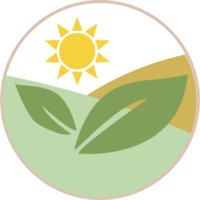Wild boar and the damage they cause in agriculture
The species sus scrofa has become a pest in many areas of the world. This is due to the damage they cause to forests and agricultural crops. Considering the rapidly growing population and the cost linked to the damage and control of wild boards, solutions to manage populations and keep them out of agricultural areas are needed more than ever.
Wild boar populations
Females start to reproduce before they even turn 1 year old. The better the food availability the earlier they start reproducing. They generally have one litter per year but can have a second litter if they lost the first one. The litter size varies from 1 to 13 with an average of 4-5.
Diet and threatened crops
The wild boar diet is about 80-90% plant-based and contains agricultural crops as well.
A study from Luxembourg analyzed wild boar damage to agriculture over a period of 10 years. One of the outcomes was that grassland was more often subject to damage caused by wild boars than annual crops.
However, wild boars will feed on almost any crop, depending on the general availability of food. Some of their favorites are sugar beet, soybean, wheat, cotton, peanut, rapeseed, corn, barley, strawberries, melons, sweet potatoes, most vegetables, alfalfa, but also pasture.
Damage caused by wild boars
The species sus scrofa has become a pest in many areas of the world. This is due to the damage they cause to forests and agricultural crops.
The cost caused by feral hogs come from the loss of crops (eating it down and damaging by trampling and wallowing in fields) but also damaged pasture due to rooting. The same goes for orchards and vineyards that may get damaged from rubbing and scraping with their body and tusks.
Furthermore, they can pass on pathogens such as Classical Swine Fever (CSF), African Swine Fever (ASF), or Porcine Parvovirus (PPV) to livestock. Further information about wild boars as sources of infectious diseases in livestock and humans can be found in the following review: Wild boars as sources for infectious diseases in livestock and humans (nih.gov) (Meng, Lindsay, & Sriranganathan, 2009).
How penergetic can help with wild boar damage
Penergetic b WV can effectively prevent game/wildlife from causing major damage to farmland, even in fields near forests or exposed areas, e.g. wetlands, ravines and mud holes. It represents a new approach to wildlife management and an attractive alternative means of reducing the economic disruption wild boar (and other problem wildlife) can cause to agriculture.
The product acts as a deterrent – like a “virtual fence or barrier” – discouraging unwanted wildlife from entering a field where the product has been applied.
Mode of Action penergetic b WV

Penergetic b WV use eliminates the need for expensive fencing, including electrification.
Some of the most threatened crop varieties when it comes to wild boar and deer are soybeans, cotton, peanuts, rapeseeds, corn, sugar beet, strawberries and pastures. With penergetic b WV, cost linked to wild boar damage, can be reduced.

Besides burrowing in fields and pasture, wild pigs damage crops, fields and pastures by rooting up planted seeds, eating young seedlings and trampling established crops. Deer like to feed on young plants, which causes extra costs such as more seed, equipment time, and human resources.

Penergetic b WV can be used on both pasture and cropland and can remain effective even after precipitation. For optimum results, contact your local Penergetic distributor.

The product is easy to use, spray applied, odorless and non-toxic.

Penergetic b WV is a natural product that is harmless for humans and animals. Its stimulus makes the animals feel uncomfortable but doesn't harm them.










